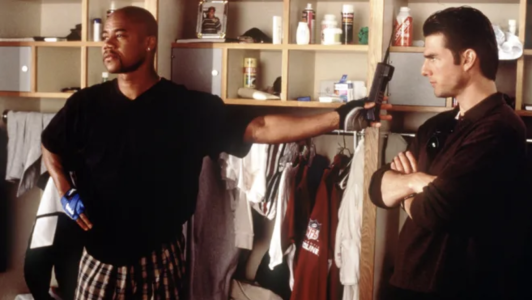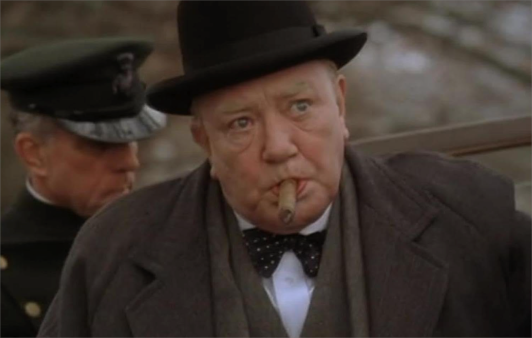Steven Pressfield's Blog, page 9
April 3, 2024
Sit Without Hope
I had a meditation teacher once who instructed us, her students, to
“Sit without hope, sit without fear.”

At the time, I couldn’t understand what she meant. But today, remembering, I think she was trying to get us to embrace meditation as a practice.
In other words, she wanted us to see meditation as an enterprise that we engaged in without attachment—positive or negative—to an outcome.
Don’t sit because you’re hoping to achieve enlightenment.
Don’t sit because you’re trying to get past your personal pain or grief or remorse.
Don’t sit to heal your emotional wounds.
Don’t sit for peace or love or Cosmic Consciousness.
Just sit.
Likewise, don’t be afraid to go deep.
Don’t be afraid to let go.
Don’t be afraid that you’ll go too far or turn a corner into some weird space that you can’t get out of.
Just sit.
This is the goal of a practice in anything.
The post Sit Without Hope first appeared on Steven Pressfield.“Sit without hope, sit without fear.”
March 27, 2024
A Practice Is Not a Means to an End
The idea of a practice is not a particularly Western one.
We Yanks and Euros always want a payoff. If we’re gonna bust our butts writing the next Game of Thrones or inventing the next iPhone, our mantra is “Show me the money!” Or at least the recognition, the fame, the accolades.
 Cuba Gooding, Jr. won an Oscar for his performance in “Jerry Maguire”
Cuba Gooding, Jr. won an Oscar for his performance in “Jerry Maguire”A practice is not like that.
A practice exists for its own sake.
A practice is like you and I climbing trees when we were kids. It was play. It was fun. We expected nothing “in return.” If we fell out of that oak or maple and broke our arm, we might have cried because of the pain, but we didn’t complain, did we? We didn’t feel “cheated.” The thought never even occurred to us.
Can we do that now? Can we enter the studio to dance as well as we possibly can, aiming for the stars … and let that be the reward, with no hopes or expectations beyond that?
I confess I’ve never fully achieved that mindset. I do want to “succeed.” I do want readers to enjoy and be moved by what I write. But I recognize that impulse as arising from a part of me that’s not the best part, not the part I played from when I was a kid … and not the part I want to work from now.
A practice is a discipline. It’s not just the work or the art, it’s the state of mind we occupy when we pursue the work or the art.
That’s what makes the idea of a practice great. That’s what makes it worth doing from now till our final breath.
Can we aspire without ego? Can we work like hell and let the work be its own reward? Can we detach our emotions from the outcome of our enterprise … and still pursue that enterprise with all our heart?
This is not an idle question.
The post A Practice Is Not a Means to an End first appeared on Steven Pressfield.March 20, 2024
Report From the Trenches, #20
A further update from the front …
I reported a few weeks ago about the experience of massive self-doubt on a new fiction piece I’m just starting. This has been superseded in the past week or two by a period that I’m sure we’re all depressingly familiar with:
When you work hard hard hard every day and see absolutely no progress.
I don’t know if there’s even a name for this. The closest I can think of is John Keats’ “negative capability.”
Whatever it is, it’s a trial that definitely separates the pros from the amateurs. Can we take it? Can we keep slogging?
The place I’ve read most about this phenomenon is in accounts of athletes. The pole vaulter who hits height X but just can’t get past it. The miler whose times refuse to get better, no matter how hard she trains, recuperates, etc.
I’ve read about it in football or basketball, like the famous time when Phil Jackson installed the “triangle offense” with Michael Jordan’s Chicago Bulls. The team “buys in.” It works and works … and just keeps losing. They can’t get over the hump no matter how many times the coach implores them to “trust the process.”
In other words, this shit is normal.
It IS the process.
What’s weird for me is that I’ve gone through this fifty times on previous projects, but I always FORGET how hard it was. Looking back, I remember struggling a bit … but not like what I’m going through THIS time.
Bottom line: Resistance takes many pernicious and diabolical forms—and this is one of them.
Are we pros? Can we “play hurt?” Alas, there’s no hack or trick for this (or for any of Resistance’s schemes) except to keep muddling through.
Did you ever see the PBS pic, “The Gathering Storm,” starring Albert Finney and Vanessa Redgrave, about Winston Churchill’s wilderness years in the late ’30s before he was called back to His Majesty’s government as First Lord of the Admiralty?
 Albert Finney won an Emmy for his portrayal of Winston Churchill in 2002’s “The Gathering Storm.”
Albert Finney won an Emmy for his portrayal of Winston Churchill in 2002’s “The Gathering Storm.”Churchill had a motto during those years (at least in the TV pic) he called “K.B.O.”
CHURCHILL
Remember our motto: K.B.O. Keep Buggering On!
If it was good enough for Winston, it’s good enough for me.
The post Report From the Trenches, #20 first appeared on Steven Pressfield.March 13, 2024
The Opposite of a Practice
Getting back to our series on Having a Practice …
… it may be useful to define several ways of working that are NOT a practice.
When we embark on a single, one-shot enterprise, hoping that the endeavor will succeed so brilliantly that we can cash in and say we’ve “made it” … that’s NOT a practice.When we finish our album or launch our startup and wait breathlessly to see if we’ve got a hit, that’s NOT a practice.When we invest ourselves emotionally in the outcome of any project, from a Spartan race to a one-act play to the launch of our new high-protein, low-fat, non-GMO energy beverage, that is NOT a practice.In other words, when our motivation is grounded in our ego, we do not have a practice.
Or to flip that statement on its head, the aim of a practice is effacement of the ego.
When Miss Craske told my friend David and his fellow Metropolitan Opera ballet students (see Writing Wednesdays, January 24 of this year) “Leave your problems outside,” she was saying:
The post The Opposite of a Practice first appeared on Steven Pressfield.
This class is a practice. When you step inside this studio to dance, leave behind your fear, your competitiveness with others, your anger, your worry, your grudges, your complaints, your dissatisfaction with your lot, your greed for glory, your avarice for attention.
You are here to dance as well as you can. Leave your ego and your problems outside.
March 6, 2024
“THE DAILY PRESSFIELD” RIDES AGAIN!
The next (and last) 1000 First Editions finally arrived from the printers.
If you missed the first batch two months ago, please click below for
Signed First Edition in mailer pack, or…Special Edition Gift Pack with companion journal, Vic Juhasz illustration note cards, fridge magnets and other goodies. A great gift for any writer or artist.And thanks again to everyone who made the first batch a sell-out!
View this post on InstagramThe post “THE DAILY PRESSFIELD” RIDES AGAIN! first appeared on Steven Pressfield.A post shared by Steven Pressfield (@steven_pressfield)
February 28, 2024
Report from the Trenches, #19
Following up on our Poll and its responses from the past two weeks, I’m thinking it might be helpful for me to share my own process and the craziness inside my head right now. Here goes:
The Daily Pressfield is out now, but that was completed (for the writing part, not the promotion) almost two years ago. Since then I’ve been working on—and just finished—a follow-up to A Man at Arms that came out in 2021. I’m really happy with this new one, but as far as my mental health is concerned, that job is over.
What’s next?
I’ve got two others, both nonfiction, that are at various half-assed points of completion. I have faith in both, but neither one is really catching fire for me right now.
So I’ve started another fiction piece. I’m racked with self-doubt over it. Big, big Resistance. The voice in my head is telling me the idea is really dumb (which it may be) and for sure not commercial. The voice is telling me the idea is totally out of the areas I’ve been writing in (which it is) so that no reader who likes my stuff is going to want to follow me into this totally new area.
And the idea is lightweight. It’s not big or bold or ambitious (though already it’s really hard). The voice is telling me I’ve run out of big ideas. I’m over the hill. It’s time to move to the farm.
Worse, I think, of this new idea, “How could I possibly sell or promote this?” I have no answer for that either.
Notice please that I’m not offering even the tiniest clue in this post as to what this idea is about. That’s because I’m superstitious. It’s been my practice for years when I start a new project to give the file a name that’s NOT the name of the real book. Why? Because the devil might be watching and I don’t want him to be able to find the file and screw it up.
 Ming the Merciless. If only our adversaries were this clear and obvious.
Ming the Merciless. If only our adversaries were this clear and obvious.Why am I offering this report from the trenches? I’m not sure myself. I think maybe to encourage all of us reading this with the notion that the process of writing is nuts … and we all go through these ordeals of massive self-doubt and self-sabotage.
Bottom line for me: I’m not stopping. I take the voice in my head as pure Resistance and I draw strength from it, reckoning that Big Resistance = Big Dream. And even though I don’t see how this new project is going to work or possibly appeal to anybody, I know I have to keep going AS IF I WERE CERTAIN that it will or that, even if it doesn’t, it’s important FOR ME in whatever journey I’m on, even though I have no idea what that journey might be or where it’s headed, if it’s headed anywhere at all.
Shit like this is why writers and artists flame out or fall off the path. These are the crazy (and I DO mean crazy) obstacles and shape-shifting fake-outs our work makes us face. There’s not even a name for them. They’re the totally glamourless, quotidian, uncinematic, pain-in-the-ass, solitary-to-us ordeals that nobody but us knows about and even we think we’re crazy when we find ourselves coming up against them.
The pro, I’m telling myself, keeps going even when no progress is visible. Even when her time in the hundred is going up and not down, even when there’s not a part of her body that isn’t hurt and aching. The amateur lets these dark patches discourage her and break her will. The pro shuts up and keeps going.
That’s what I’m telling myself now.
The post Report from the Trenches, #19 first appeared on Steven Pressfield.February 21, 2024
Thanks, Everybody!
I have to say, I was blown away by the responses to last week’s post, “A Poll.” Thanks to everyone who wrote in … and to everybody else who responded in their mind, if not with their keyboard.
To be brutally candid, there have been times, like when a post would get 10 Comments (or fewer), when I wondered if anyone was “out there” at all. I’d say to myself, “Why am I even doing this? I’m not helping anyone. No one’s even listening.”
Or I would wonder, as I said in the Poll post, “Maybe I’m writing these Wednesday posts to readers who are tuned in for completely different reasons than what I think they are. And I have no idea what those reasons are!”
So it was with great relief and gratification that I took in last week’s Comments. I read ’em all, carefully. It helps me tremendously because it fortifies me in my commitment to keep doing this thing, whatever we might call it.
And I hope it helps you, the reader, to know there is a real COMMUNITY of like-minded and like-aspiring souls. We’re all in the trenches together. I’m in favor of that!
Another way last week’s responses has helped me is this:
I’ve got lots of material that I’ve been holding back. Specifically, two “War of Art”-type books that have been written and proofed but that I’ve been reluctant to even mention, let alone publish, just because I didn’t want to keep putting stuff out BANG BANG BANG. And I was hesitant to believe anyone would even be interested.
I’ll revisit that now.
But most of all, I just want to say thanks to everyone who took the time (and a lot of the Comments were very brave and self-revealing) and made the effort to articulate exactly where they stood on their own artist’s journey.
What we’re doing, all of us, takes guts. It’s solitary. It’s lonely. The interior challenges we deal with as part of the process are stuff that no school has prepared us for. Some of these challenges don’t even have a name, let alone a prescribed solution. And each of us is facing these dragons alone, without a road map.
So props to all of us! It’s an honor, speaking just for myself, to be in the trenches with such a community of intrepid and high-aiming souls. I’ll keep doing it if you will!
The post Thanks, Everybody! first appeared on Steven Pressfield.February 14, 2024
A Poll
I’m curious about something. Can you guys help me out?
I’ve been doing a bunch of podcasts lately, promoting the publication of The Daily Pressfield. A question I’m getting asked over and over is, “Who is this book for?”
Which in my mind equates to, “Who subscribes to Writing Wednesdays?”

The way I’ve answered the question is something like this:
I wrote the book for writers and artists (and entrepreneurs and other creative adventurers) who are attempting long-form works, i.e. something like a novel or a startup that will take at least a year and maybe significantly more) and who are essentially ALONE in this enterprise.
What I mean by “alone” is that the venturer is not supported psychologically, emotionally, or financially by any external structure like a company, a school, the military, whatever. In other words, he or she is in their room alone, facing their own Resistance alone, confronting without external support the same issues that I myself confront every day—self-motivation, self-discipline, self-belief, self-reinforcement, self-validation.
That’s the long version of my answer… and also, clearly, my conception of Who Reads Writing Wednesday Each Week?
My question to you, dear readers, is this:
Am I close? Wildly off? Would the description above apply to you? In part? Whole?
And if not, what description would apply to you?
Thanks in advance for taking the time and thought. I’m really curious to see what responses come back. Please use the Comments section below so we can all see what’s what!
The post A Poll first appeared on Steven Pressfield.February 7, 2024
A Practice and Resistance
Why do we have a practice at all?
I have my own reasons, some of which definitely go deep into the airy-fairy, but the most obvious and the most practical is this:
We have a practice in order to confront and overcome Resistance.
A practice by definition defeats Resistance because it produces work every day with total focus and dedication. And a practice is lifelong, so we know we’ll never quit.
 Overcoming Resistance is a side-benefit of having a practice.
Overcoming Resistance is a side-benefit of having a practice.One could say that a practice is “habit.” But in truth a practice goes way beyond that. A practice enlists habit. It implies habit (if we have a practice, we do it every day, i.e. it can be called a habit) but it is habit only in the sense that giving birth is exercise.
Likewise, if we said the purpose of a practice is to overcome Resistance, we would be vastly understating the depth and effect of having a practice.
Overcoming Resistance is a side-benefit of having a practice.
For myself, I was years into the act of having a practice before I even thought about its efficacy as a strategy to overcome my own Resistance. Resistance was (and is) a given for me. It wakes up with me. I know I will have to face it every day, and I know it will never diminish or relent or go away.
But I have a practice. That’s all I need to know. I know at a certain time of day I will go into a certain room. I will enter with a very specific mindset, i.e. “Leave your problems (and your ego) outside.” And I will engage in a very specific (though infinitely varied in the moment) enterprise.
I have left Resistance outside as well. It is not allowed into the space where my writing practice takes place.
In an earlier post we cited my friend and mentor Paul Rink’s admonishment to me immediately after I’d finished a manuscript: “Good for you, start the next one today.” What Paul meant, though he didn’t express it in these terms, was:
The post A Practice and Resistance first appeared on Steven Pressfield.“You have a practice now, Steve. A practice is engaged in every day. Don’t tell me you’re tired or you want to take a victory lap or you don’t have any idea what your next project will be. None of that matters. You have a practice now. Do it.”
January 31, 2024
“Sell it somewhere else”
I can’t resist putting up one more ballet story from my great friend and mentor, David Leddick.
Remember, in last week’s post, David told us about dancing at the Metropolitan Opera and taking a class there from Miss Craske, who told her students, “Leave your problems outside.”
 David as Worldwide Creative Director on the Revlon account at Grey Advertising, 1969
David as Worldwide Creative Director on the Revlon account at Grey Advertising, 1969Here’s more from David’s book, I’m Not For Everyone… Neither Are You:
Miss Craske taught the Cecchetti Method, a ballet technique created by Enrico Cecchetti, who had trained the Russian greats: Nijinsky, Pavlova, Karsavina and many others.
She was an English lady with a high, piercing voice. She brooked no foolishness in her classes. One day my friend Betty Ann Paulin, who was a musical comedy dancer, was in the front row doing a combination.
Miss Craske stopped the class and said, “Betty Ann, you wretched girl, what are you doing?” Betty Ann replied, “I’m selling it, Miss Craske.”
Then came the reply: “Well, you can sell it somewhere else.”
At the Met, you were there to serve the music, the story, and the production. Never your own ego.
My first grown-up job was as an office boy at $105 a week on the Revlon account at Grey Advertising in New York. David was the Worldwide Creative Director. That was a big, big deal. He was such a great ad writer that his portfolio—the “book” you carried around to show what you’d done—didn’t contain his ads; it only held spoofs of his ads from New Yorker magazine cartoons.
David was around thirty-five then; this was probably ten years after his ballet career. Part of my job as an office boy was to carry the pages of ad copy from one star writer to another or to the art director they worked with. (Revlon was all star writers, mostly female.) I remember reading the stuff and thinking, “I can write this shit.”
One day, I gathered up my courage and knocked on David’s door. “How does somebody get to be a writer in this business?” David gave me an assignment. “Pick three existing ads that you like; then do the next one in the series. Then pick three you hate and do it right. This doesn’t have to be fancy, just scribble it on cocktail napkins.”
David introduced me to his friend Ed Hannibal, who was a creative director at Benton & Bowles. Ed hired me. So, whatever I’ve done or not done since then, it’s all David’s fault.
The post “Sell it somewhere else” first appeared on Steven Pressfield.


